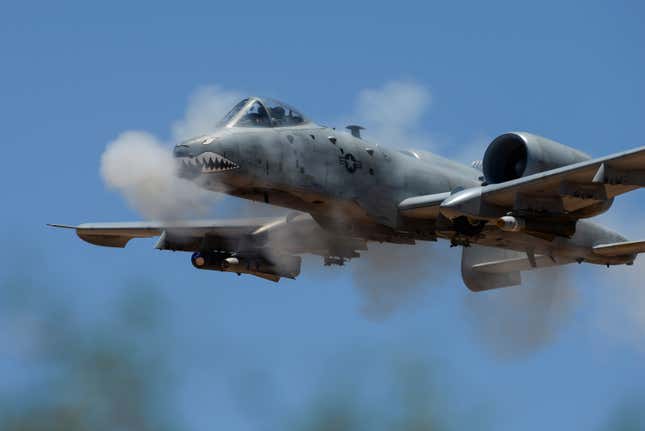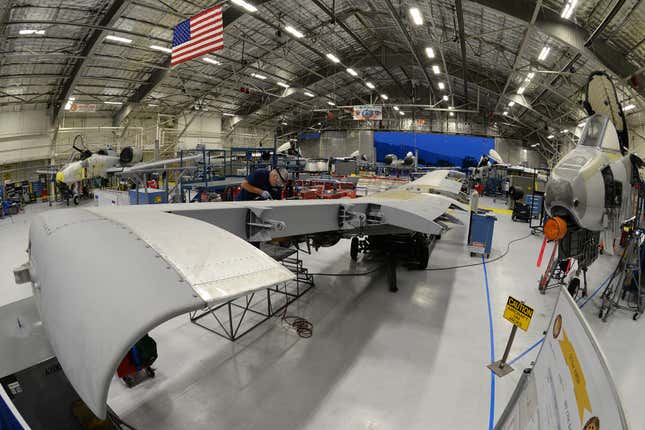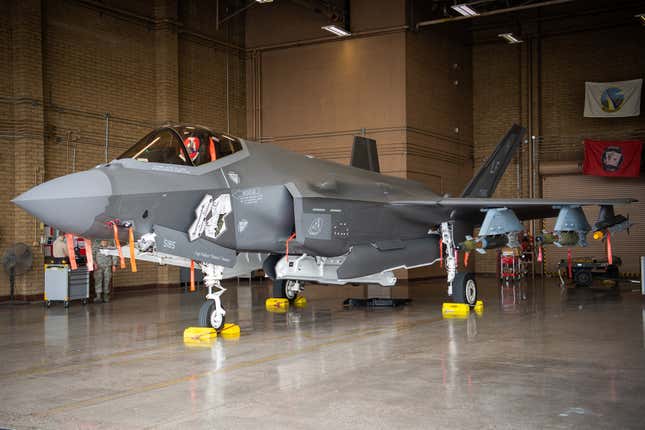
The A-10 Warthog—Cold War tank killer, terrorizer of the Taliban, ugly but fearsome duckling of American airpower, one-plane motivation poster and hero to ground troops everywhere—is sporting new wings.
The U.S. Air Force just completed the task of re-winging 173 A-10s in service, the Air Force Times reports. This should keep them flying until the late 2030s.
There’s just one problem: only 61 percent of Warthogs received the new wings, meaning the jets that don’t get new wings could be pushed out of service.
The A-10 Warthog was developed in the 1970s as the first dedicated close air support (CAS) aircraft for the U.S. military. Unlike other CAS platforms, fighters or bombers pressed into service providing aerial firepower for ground troops, the A-10 was designed from the ground up as flying artillery.
Titanium armor, redundant wiring and hydraulic systems, and engines mounted away from the fuselage gave the A-10 the ability to shrug off light anti-air weapons. The A-10 was designed to flash low over the hills and valleys of Germany, bomb and strafe Soviet tank columns into scrap, and disappear over the next ridge before the Red Army knew what hit them.
The A-10 Enhanced Wing Assembly replacement program started in 2011, tasked with replacing the wings on 173 of approximately 282 A-10s. The re-winging work was managed by the 571st Aircraft Maintenance Squadron, which operates out of the Ogden Air Logistics Complex at Hill Air Force Base in Utah. The Ogden facility carries out a wide variety of work on a large number of platforms, including the F-35 Lightning II, F-22 Raptor, F-16 Fighting Falcon, C-130 Hercules, and the Minuteman III ICBM. One hundred sixty two A-10s were re-winged at Ogden, while 11 jets were re-winged at Osan Air Base in South Korea.
Some of the re-winging work required new or replacement parts, a problem since A-10 production ceased decades ago. Air Force officials in charge of the work raided the Boneyard, also known as the 309th Aerospace Maintenance and Regeneration Group at Davis-Monthan Air Force Base, for needed parts. There, Warthogs baking in the Arizona sun are cannibalized for spares to support flying jets. The Air Force also fabricated new parts for the aircraft.

The new wings, according to Defense News, should give the A-10 fleet another 10,000 hours of flight time—enough to keep the planes flying into the late 2030s.
That is, if the A-10 makes it that far. The Air Force has been trying to get rid of the A-10 since the Gulf War, on the grounds that it’s too expensive to keep around and not survivable over modern battlefields. Modern air defense threats, particularly those fielded by Russia and China, make today’s skies extremely dangerous to friendly aircraft. The Air Force thinks the F-35A Joint Strike Fighter, with its stealth, sensors, and precision guided weapons, can take over for many of the Warthog’s missions.
Like many weapons systems, the A-10 has a congressional fan club. Unlike many weapon systems, the A-10 has a club not because of the economic benefits but because a lot of people just plain like the plane—particularly the ground troops that rely on it.
This has kept the A-10 alive all these years, and when the fleet faced a permanent grounding over aging wings, Congress fronted the money to replace the wings on 173 of the 283 or so ‘Hogs still in Air Force, Air Force Reserve, and Air National Guard service.

While the re-winging is good news, it doesn’t cover the whole A-10 fleet. That leaves one hundred Warthogs stranded with the older wings primed to be retired. The squadrons currently flying them would likely transition to... the F-35.
Is it worth keeping nearly three hundred A-10s in service when the aircraft’s ability to perform its primary mission— attacking frontline ground forces—is in question? Can America keep flying the jets to the edge of their usefulness, before they sustain crippling losses in combat against a high tech enemy? Will the Air Force retire them too late, or too soon?
These are all serious questions the Pentagon and Congress must grapple with. As military technology evolves and surface-to-air weapons become more lethal and responsive, sooner or later the A-10’s winning streak will come to a halt.